Best Tools for Project Management

If you are a project manager or are considering taking on the role of project manager, there is a misconception that you can manage your projects with nothing more than pen and paper. Similarly, if you are working on a project or have any task that needs to be completed, you must have the right tools to help you stay organized and accomplish your goal effectively. If not, it can lead to confusion and possibly even a lack of motivation. Keep on reading to find the best tools for project management.
Benefits of using Project Management software's
Project managers are in charge of leading and coordinating many different projects. Managing these projects always involves a lot of planning, which is why project managers often find themselves struggling for time to work on their projects.
1. It helps you manage your time.
Project management software, such as project planner and project schedule, can help you manage your projects more efficiently and effectively. It can also help save a lot of time on the part of the project manager.
2. It helps in better planning for the future.
Project managers do not often have time to plan for their future (as they are too busy planning for other people). But project management software can help you prepare for your future career and help you manage your time better.
3. Project management software is more sophisticated than what you get in a book.
Many of the planning and scheduling projects involve complex calculations, which cannot be included in a textbook. It can only be done by using project management software.
4. It requires a lot of creativity and self-motivation
Project managers have to have both the knowledge and the ability to manage their projects. Project management software can help project manager manage their project and add more versatility to their skills.
5. Helps with your projects
Because of time constraints, many people have to juggle between work and personal projects. Project management software can help people manage their time and project better.
6. Make it easy to track your progress as a project manager.
Managing your projects always involves keeping a check on the progress that you have made so far. It can be done using project management software, which will also update you on the future schedule of your project.
7. Manage your team more effectively.
Team members are often working on several different projects at the same time. Managing each of these tasks effectively can be difficult. The project manager will also have to plan for each of these people. However, in project management software, the schedule and the details of each person's work can be easily managed right from planning.
8. Maintain a complete record of all your projects
Having an updated record of all your previous projects helps for future references. It also gives you a clear idea about what you have achieved in the past, which can help you plan better in the future.
9. It helps you stay focused and be more productive at work.
Project management software is designed to track the progress and times of all your tasks and analyze the data into reports that help you make more effective decisions.
10. Maintain a constant focus and reduce distractions
It can be challenging to stay focused in the middle of all the many projects you work on. Project management software helps you stay focused with pre-planned tasks and schedules, which help to eliminate any distractions.
11. Project management software helps you manage your budget efficiently and effectively.
Many project managers have their budgets, but they do not always use them properly, which leads to many mistakes in their plans. This budget management can be done using project management software, which will help you manage your budget more effectively.
12. Focus on the essential things instead of the irrelevant ones
When there are too many projects that you have to plan for and manage, it is easy to get lost and forget about the essential things still pending. A project manager needs to keep in mind all the vital factors involved in any decision-making process while working on a project.
Best Tools for Project Management
Getting organized is hard, especially when it comes to projects. There is a lot of trial and error in figuring out the best tools to use, as each seems like a double-edged sword. However, some devices are easy enough for anyone to use and will save you tons of time on extended projects and short deadline ones, so if you want the peace of mind that comes with knowing that your project will be successful by using these top 15 tools for project management.
1. Trello:
Trello is an excellent tool for project management. It is straightforward to use and allows you to organize projects in either lists or boards, depending on your workflow. You can easily drag and drop tasks on different lists and grids, create new lists and boards, move jobs between them (or even develop sub-boards), add attachments, assign labels, hide/show tags, set due dates/milestones, etc. And best of all? Trello is completely FREE!
2. Basecamp:
Basecamp is another excellent tool for project management. It allows you to schedule and track different tasks, create a to-do list, easily share files and single out projects that need your attention - all in one easy-to-use dashboard. Even better? It is accessible for up to 15 people on your team. However, you will have to get the paid version if you have more.
3. Asana:
Asana stands out, mainly because of its ability to easily manage large work teams. It allows the designated project manager or team lead to assign tasks and keep track of how those tasks are progressing among all the group members. It also allows for functions to be emailed and moderated, which is excellent for tough jobs, such as due dates. And best of all? Asana is completely free for up to 100 users.
4. Trello + Toodledo:
Toodledo is an outstanding to-do list tool with superb integration with Trello's boards. It allows it to function as an in-depth task management system while also providing users with an excellent task-listing tool. It will enable you to keep track of all your tasks in one place and gives you access to simple reports and email notifications of your jobs as they are completed. And best of all? Toodledo is entirely free.
5. Evernote/Pocket:
Both of these are note-taking and management tools. Handy to have, as they can be used for many different tasks that don't necessarily involve a project management process. With Pocket, you have access to all the notes and information you record in your favorite iPhone apps or websites so that you can refer back to them quickly at any time. With Evernote, you can easily tag notes, set up different notebooks, and organize your ideas into lists in one place - very handy for long-term projects like papers or reports. And best of all? Both are entirely free!
6. Asana + Basecamp:
Asana has some great built-in functions, allowing your project manager to assign tasks and track progress on deadlines easily. It is quite a powerful tool for working on large projects, as it will enable you to set priorities and monitor the progress of tasks and deadlines across various team members. And best of all? Asana is completely free, so there's no reason not to give it a shot!
7. Toodledo + Wunderlist:
Wunderlist is another outstanding task management tool that comes with excellent integration with Trello's boards - allowing users to plop all their lists into a single dashboard, giving you one central place for managing your daily tasks. With their search function, you can easily organize your tasks into lists and slots, set due dates, make notes, and find things more accessible. And best of all? Wunderlist is completely free!
8. Mindmeister:
Mindmeister is a rapid mind-mapping tool that allows you to create diagrams to represent your tasks in the most effective manner possible. It also has excellent integration with Evernote, so you can organize all of your mind-mapped ideas into lists or notebooks in one place and move between them as needed. And best of all? Mindmeister is entirely free!
9. Google Docs/Drive:
It is a tool that everyone is used to - but only because it's free to use and easy to use! It allows you to create and share documents, spreadsheets, and presentations with others. Microsoft has its version of these online document-sharing tools (which are also free), but between the two, the G Suite beats out MS Office in terms of storage space and flexibility in collaboration. And best of all? It's completely free!
10. Google Drive + Various other productivity apps:
Here's an interesting one - using diverse tools for project management purposes. Google Drive is, of course, great for keeping files and documents organized, spreadsheets, and presentations in one place. You can easily schedule tasks with Asana's integration, set due dates, and even have priority ratings tied to the different projects you need to complete. And best of all? It's free!
11. Google Docs + Google Forms:
It is another example of a tool that everyone has used at one point or another - Google Docs is incredibly convenient for quick notes, spreadsheets and presentations, but can also be used for advanced task management like grading or writing term papers or research papers. As long as you have a Gmail account, you can use this tool for any project or task that you need to complete. And best of all? The Google Docs suite is completely free!
12. Wunderlist + Evernote:
It is another excellent example of two apps that can be used for new project management techniques - Wunderlist allows users to create lists and tasks quickly and integrate them with Evernote's search function to enable you to find things more efficiently (be it in multiple places or even at different times). And best of all? Wunderlist is completely free!
13. Slack:
It may seem like an odd choice for a project management tool, but you'd be surprised at how many people use it in this way. Slack has become a handy tool for companies and small businesses alike, creating communities of project teams (up to 15 members) that allow team members to ask questions, share information, and keep track of their tasks more efficiently. And best of all? Slack is completely free!
14. Google Calendar:
It is another tool most people think of when they hear "project management" - Google Calendar can be an excellent resource for scheduling appointments and meetings. Still, proper integration (like with Asana) can also be used to track tasks and even assign them to specific team members or groups. And best of all? It's completely free!
15. Trello + Todoist:
Todoist is a simple task organizer that allows users to create tasks and share them directly from their Trello boards. It is an excellent way to keep track of all your tasks and ensure that everyone on the project keeps up with what needs to be done for each stage of the project. And best of all? It's completely free!
Tips on how to manage a project
If you're looking to work on a project with a group of people, you'll want to learn how to use project management. The good news is that there are plenty of resources available, both online and offline, to keep your team organized and on track. Below are five simple tips for using Project Management.
1. Have a meeting before starting work
Although it is tempting to jump into a project and start working right away, you must organize a meeting with all your team members before beginning work. This meeting needs to be as short as possible and should only include essential planning.
2. Team member responsibilities
Everyone must know their responsibilities beforehand to have the same information at hand when they start working. This way, there will be less confusion and misunderstandings.
3. Delegate and plan tasks ahead of time
Spending a lot of time on one thing will not get you anywhere if you're a project manager. Instead, you should delegate your tasks to other more qualified team members. It will allow you to have more time for the more extensive planned functions that require more thought and are more complicated than the smaller ones.
4. Set realistic deadlines and expectations
Now, this is essential when working as a project manager. Everyone must understand the time constraints and what to expect at the end of the project. Don't leave any loose ends, and make sure that everyone is on the same page to finish the project well and on time.
5. It's okay to ask for help.
Don't try to do everything on your own. Instead, make sure that you are using all the available resources to you. For example, if you need help with technical issues, it is okay to ask a team member with more technical experience than you have.
Do you feel like you are struggling with putting "strategy" and "business growth concepts" in place that make a difference? Doing it all is overwhelming! Let’s have a honest discussion about your business and see if the Power of 10 can help you. Click “HERE” to have a great conversation with our team today.
Written and Published By The Strategic Advisor Board Team
C. 2017-2021 Strategic Advisor Board / M&C All Rights Reserved
www.strategicadvisorboard.com / info@strategicadvisorboard.com











